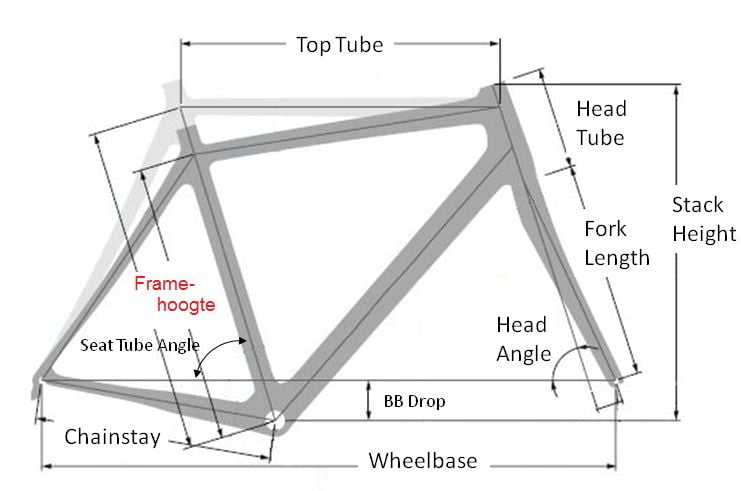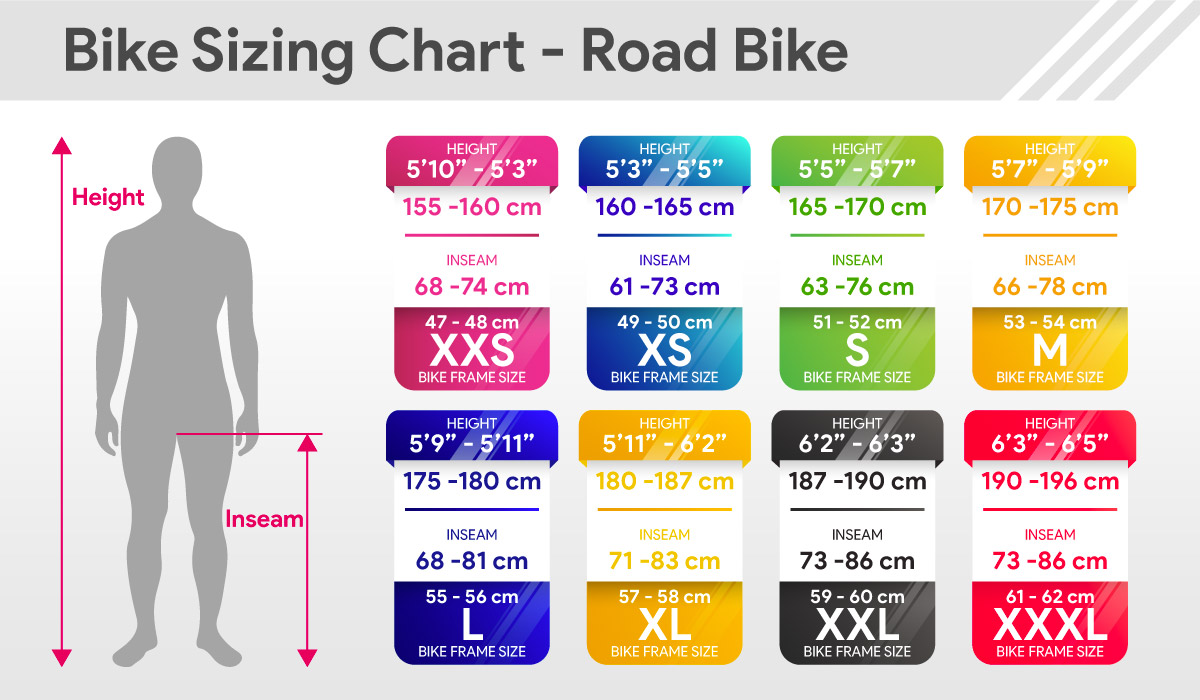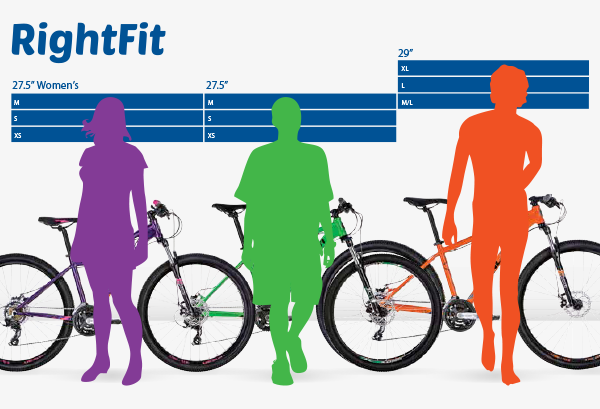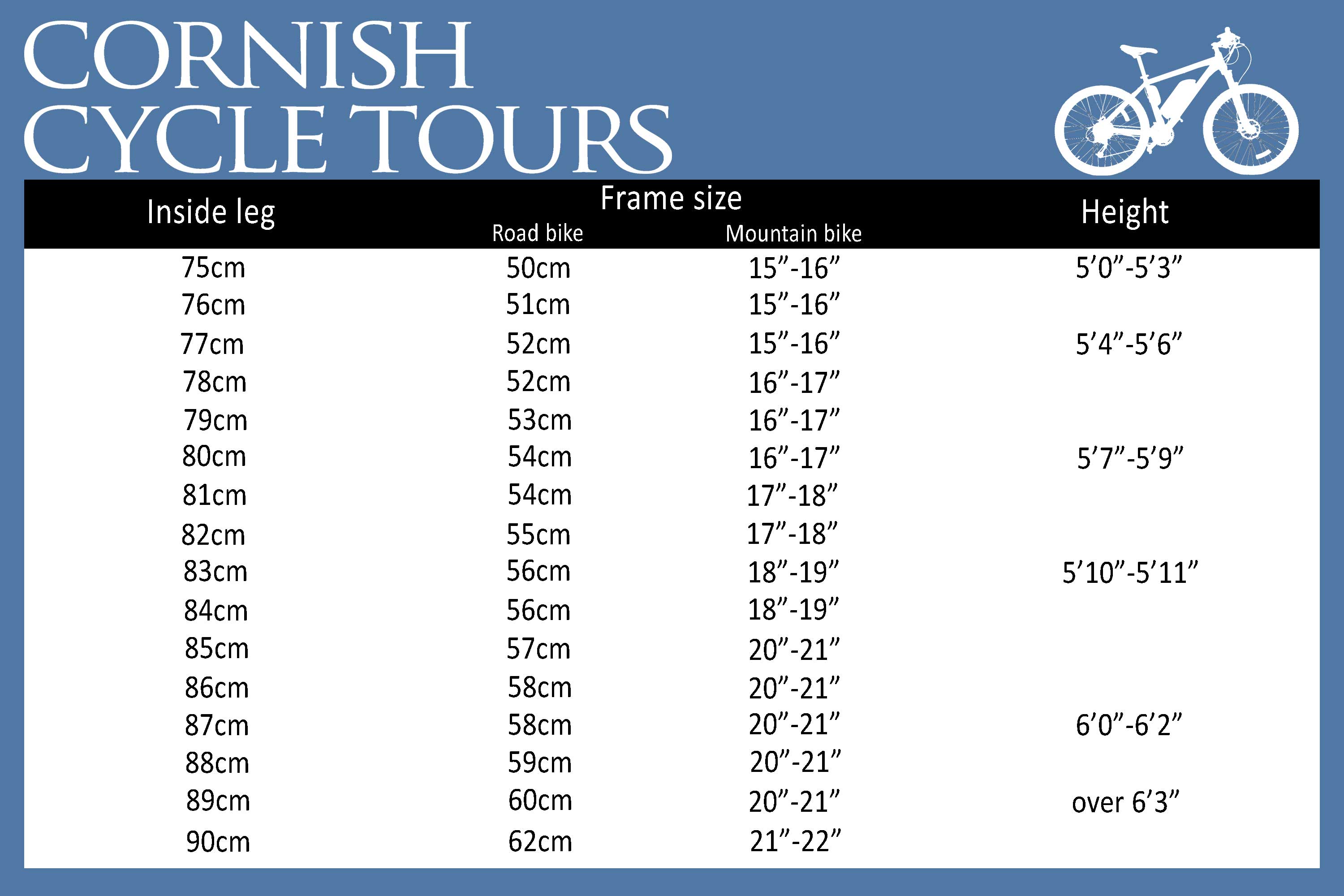Understanding the Importance of Bicycle Frame Size
Selecting the appropriate bicycle frame size is crucial for achieving a comfortable and efficient riding experience. A properly sized frame not only ensures a better fit but also contributes to improved control, reduced strain, and enhanced overall performance. Factors such as rider height, riding style, and bike type all play a significant role in determining the ideal frame size. For instance, taller riders typically require larger frames, while those with a more aggressive riding style may prefer a smaller frame for quicker handling. By carefully considering these elements, you can narrow down your options and make a more informed decision when selecting a bicycle frame size.
How to Measure Your Body for the Perfect Bicycle Frame Size
To determine the ideal bicycle frame size, you’ll need to measure your inseam length and height accurately. Follow these steps for a precise measurement:
- Measure your inseam: Stand straight against a wall, barefoot, with your back to the wall. Place a hardcover book or a ruler between your legs, pressing it firmly against your crotch. Make sure the book or ruler is level and parallel to the floor. Have a friend or family member measure the distance from the floor to the top edge of the book or ruler.
- Measure your height: Stand straight against a wall, barefoot, with your back to the wall. Make sure your heels are touching the wall. Have a friend or family member measure the distance from the floor to the top of your head.
Once you have these measurements, consult a bicycle frame size chart, such as the one provided by your preferred bicycle manufacturer, to find the recommended frame size based on your inseam length and height. These charts typically take into account various bike types and frame geometries, ensuring a more accurate frame size recommendation.
Visual aids, such as diagrams or videos, can be helpful in understanding the measurement process and properly positioning the measuring tools. Real-life examples, like comparing your measurements to those of other cyclists or athletes, can also provide valuable context and help you better understand the ideal bicycle frame size for your body.
Different Types of Bicycles and Their Ideal Frame Sizes
Various bike types cater to different riding styles and terrains, and each has a corresponding ideal frame size range. Here, we’ll discuss four primary bike categories and their typical frame size recommendations:
- Road bikes: These bikes are designed for speed and efficiency on paved surfaces. Road bike frame sizes are usually measured in centimeters and range from approximately 44 to 64 cm. Smaller frames are better suited for shorter riders, while taller riders will require larger frames. A proper road bike fit should position the rider for optimal power transfer and aerodynamics.
- Mountain bikes: Mountain bikes are built for off-road adventures and typically have sturdier frames and wider tires than road bikes. Mountain bike frame sizes are often measured in inches and range from 13 to 23 inches. Suspension systems and frame geometry can affect the ideal frame size, so it’s essential to consider the bike’s intended use and the rider’s preferences when selecting a mountain bike frame.
- Hybrid bikes: Hybrid bikes combine elements of road and mountain bikes, offering a versatile riding experience for various terrains. Hybrid bike frame sizes are typically measured in inches and range from 13 to 23 inches. These bikes often have a more upright riding position than road bikes, so riders should consider their flexibility and comfort when choosing a hybrid bike frame size.
- Cruiser bikes: Cruiser bikes are designed for leisurely rides on flat, paved surfaces. They usually have a laid-back riding position and wide, comfortable seats. Cruiser bike frame sizes are often measured in inches and range from 14 to 24 inches. These bikes typically have a more relaxed geometry, so riders should focus on finding a frame size that provides a comfortable and stable riding experience.
It’s important to note that frame size is just one aspect of bike fit. Differences in frame geometry, such as top tube length, seat tube angle, and head tube angle, can significantly impact the rider’s position and comfort. Therefore, it’s crucial to consider the bike’s intended use and the rider’s preferences when selecting a frame size.
Factors to Consider When Choosing a Bicycle Frame Size
Besides rider height, bike type, and riding style, there are additional factors to consider when selecting the perfect bicycle frame size. These factors include:
- Flexibility: Your flexibility can significantly impact the ideal frame size and bike fit. Riders with limited flexibility may require a slightly larger frame to maintain a comfortable riding position. Conversely, more flexible riders might prefer a smaller frame for quicker handling and a more aerodynamic position.
- Personal preferences: Comfort and personal preferences play a crucial role in determining the ideal bicycle frame size. Some riders prefer a more aggressive, forward-leaning position, while others prefer a more upright, relaxed riding position. It’s essential to consider your comfort level and preferences when selecting a frame size and making adjustments to your bike.
- Test riding: Test riding a bicycle is one of the best ways to determine if the frame size and bike fit are suitable for your needs. Test riding allows you to assess the bike’s handling, comfort, and overall feel. If possible, test ride multiple bikes in your desired frame size range to compare and contrast their performance.
- Professional bike fitting: Consulting with a professional bike fitter can help ensure a proper bike fit and prevent discomfort or injury. Bike fitters have the expertise and tools to assess your body’s unique measurements, flexibility, and riding style. They can recommend specific frame sizes, components, and adjustments to optimize your bike fit and riding experience.
When choosing a bicycle frame size, it’s essential to consider all these factors to ensure a comfortable and efficient riding experience. Remember, the perfect frame size varies from rider to rider, so take the time to evaluate your individual needs and preferences.
Popular Bicycle Brands and Their Frame Size Recommendations
When determining the ideal bicycle frame size, it’s helpful to review the specific recommendations provided by popular bicycle brands. Here, we’ll compare and contrast the frame size recommendations of three leading bicycle manufacturers:
- Brand A: Brand A offers a wide range of bicycles, from road bikes to mountain bikes. For road bikes, their frame size chart typically recommends a 50 cm frame for riders with an inseam length of 77-80 cm. For mountain bikes, they suggest a 17-inch frame for riders with a height of 5’7″ to 5’9″. Always consult the brand’s specific chart for the most accurate recommendations, as frame size ranges may vary between models.
- Brand B: Brand B specializes in high-performance road bikes and triathlon bicycles. Their frame size chart recommends a 52 cm frame for riders with an inseam length of 81-84 cm. For triathlon bikes, they suggest a 54 cm frame for riders with a height of 5’9″ to 5’11”. As with any brand, it’s essential to consult the brand’s specific chart for the most accurate recommendations.
- Brand C: Brand C is known for its versatile hybrid and commuter bikes. Their frame size chart typically recommends a 17-inch frame for riders with a height of 5’7″ to 5’9″. For their electric bicycles, they suggest a 17-inch frame for riders with an inseam length of 81-85 cm. Again, always consult the brand’s specific chart for the most accurate recommendations.
By comparing and contrasting the frame size recommendations of various brands, you can better understand the nuances between manufacturers and make more informed decisions when selecting a bicycle frame size. Remember, frame size is just one aspect of bike fit, and it’s crucial to consider other factors, such as flexibility, riding style, and personal preferences, when choosing the perfect bicycle frame size for your needs.
Common Mistakes to Avoid When Choosing a Bicycle Frame Size
Selecting the wrong bicycle frame size can lead to discomfort, inefficiency, and even injury. To help you make an informed decision, we’ve compiled a list of common mistakes to avoid when choosing a bicycle frame size:
- Relying solely on height: While height is a crucial factor in determining the ideal bicycle frame size, it’s not the only factor. Consider other elements, such as inseam length, riding style, and flexibility, when selecting a frame size.
- Ignoring the bike’s intended use: The intended use of the bicycle plays a significant role in frame size selection. For example, a mountain bike frame size may differ from a road bike frame size, even for riders of the same height.
- Assuming one brand’s frame size is equivalent to another’s: Different bicycle brands may have varying frame size measurements, even for bikes with similar intended uses. Always consult the specific frame size chart provided by the manufacturer for the most accurate recommendations.
- Neglecting to test ride: Test riding a bicycle is one of the best ways to determine if the frame size and bike fit are suitable for your needs. Test riding allows you to assess the bike’s handling, comfort, and overall feel.
- <Not consulting a professional bike fitter: A professional bike fitter has the expertise and tools to assess your body’s unique measurements, flexibility, and riding style. They can recommend specific frame sizes, components, and adjustments to optimize your bike fit and riding experience.
By avoiding these common mistakes, you can increase the likelihood of choosing the perfect bicycle frame size for your needs and ensure a comfortable and efficient riding experience.
How to Adjust Your Bicycle for a Perfect Fit
Even after selecting the ideal bicycle frame size, minor adjustments may be necessary to achieve the perfect fit. Here, we’ll explain how to make three essential bicycle adjustments:
Saddle height
To adjust your saddle height, follow these steps:
- Stand next to your bicycle and place your heel on the pedal.
- Pedal backward until the crank arm is at its lowest point.
- Your leg should be almost straight, with a slight bend in your knee.
- If your knee is significantly bent or locked, adjust the saddle height accordingly.
Saddle angle
To adjust your saddle angle, follow these steps:
- Sit on your bicycle and place your feet on the pedals in the riding position.
- Check the saddle’s angle by looking at it from the side.
- Adjust the saddle angle so that it is level or slightly tilted downward toward the nose.
Handlebar height
To adjust your handlebar height, follow these steps:
- Stand next to your bicycle and measure the distance from the ground to the saddle’s top.
- Then, measure the distance from the ground to the handlebar’s top.
- The handlebar height should be approximately 1-2 inches lower than the saddle height for a more aerodynamic position. Adjust accordingly based on your flexibility and comfort preferences.
By making these minor adjustments, you can optimize your bicycle fit and enhance your overall riding experience. Remember to always consult a professional bike fitter if you’re unsure about making these adjustments yourself.
Maintaining Your Bicycle Frame for Long-Term Use
Properly maintaining your bicycle frame is crucial for ensuring a safe, enjoyable, and long-lasting riding experience. Here are some essential maintenance tips:
Cleaning
Regularly clean your bicycle frame to remove dirt, grime, and debris. Use a mild detergent, warm water, and a soft brush to gently scrub the frame. Avoid using high-pressure washers, as they can damage the frame and components.
Lubricating
Lubricate your bicycle’s moving parts, such as the chain, derailleur, and brake levers, to ensure smooth operation and prevent wear and tear. Use a high-quality bicycle lubricant and follow the manufacturer’s instructions for application.
Storing
Store your bicycle in a cool, dry place, away from direct sunlight and extreme temperatures. If possible, hang your bicycle from a wall or use a stand to prevent the frame and wheels from being damaged or bent.
Inspections
Periodically inspect your bicycle frame for signs of damage, such as cracks, dents, or rust. If you notice any issues, consult a professional bicycle mechanic for advice and repair recommendations.
By following these maintenance tips, you can help ensure that your bicycle frame remains in excellent condition for years to come. Regular maintenance not only extends the lifespan of your bicycle but also helps maintain its value and performance.









